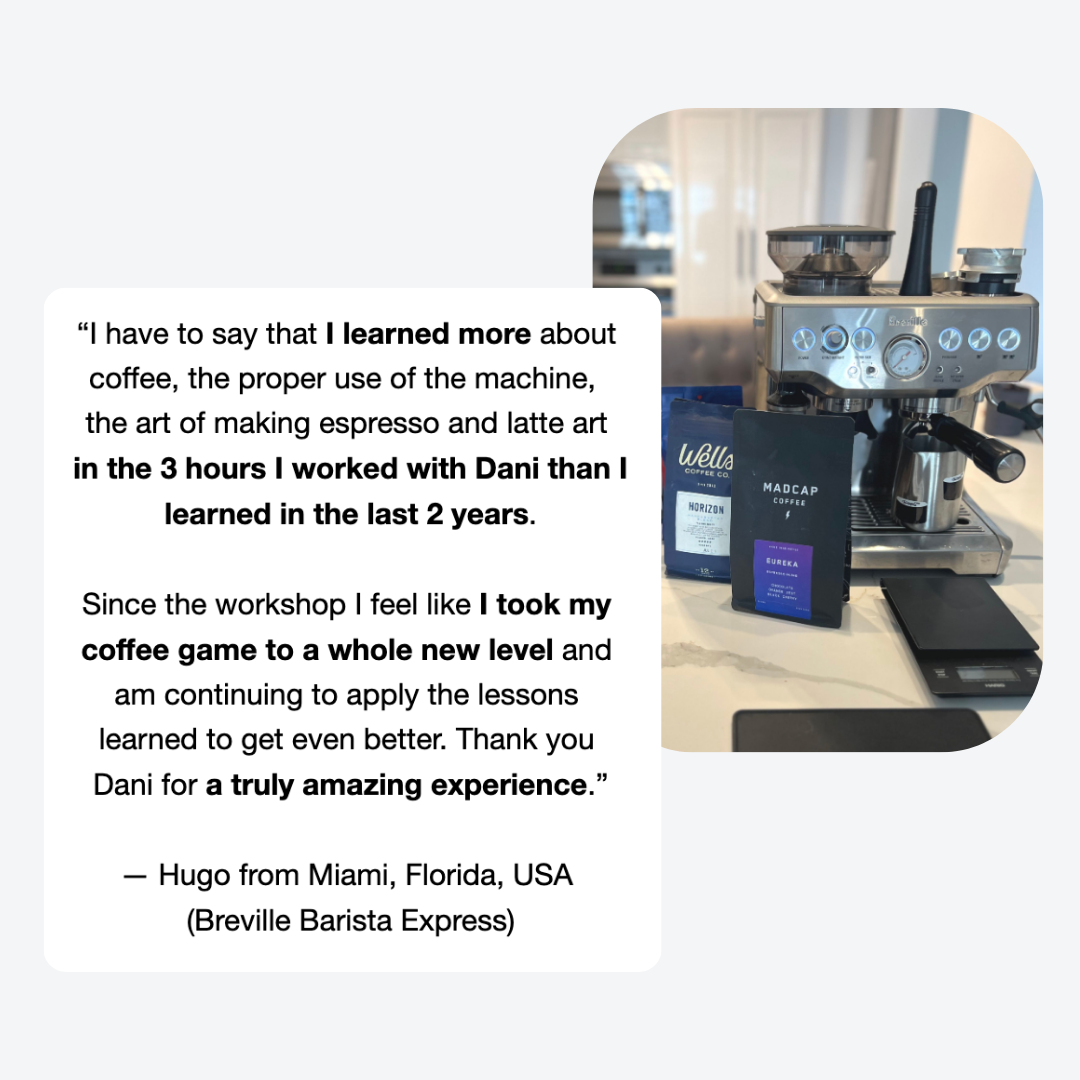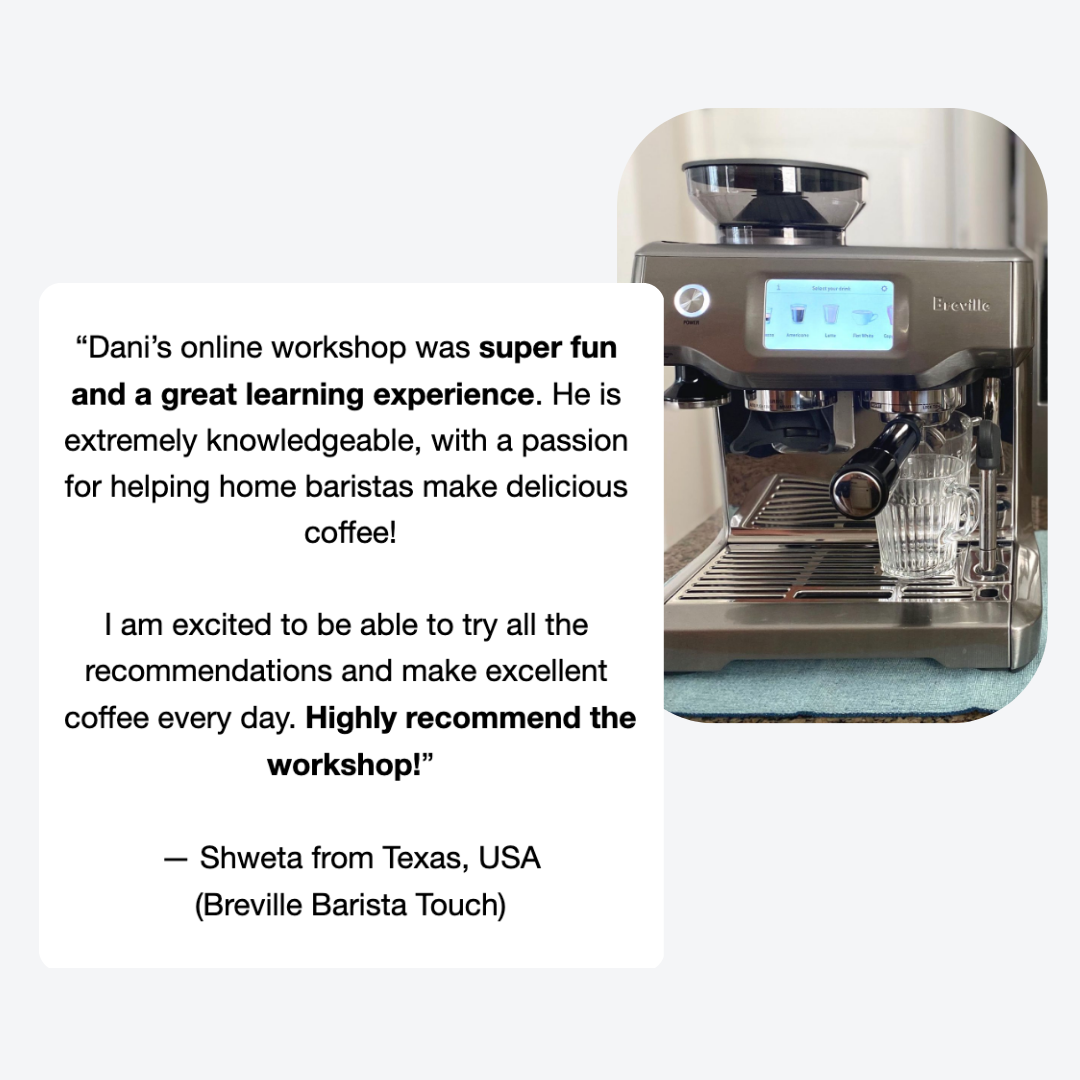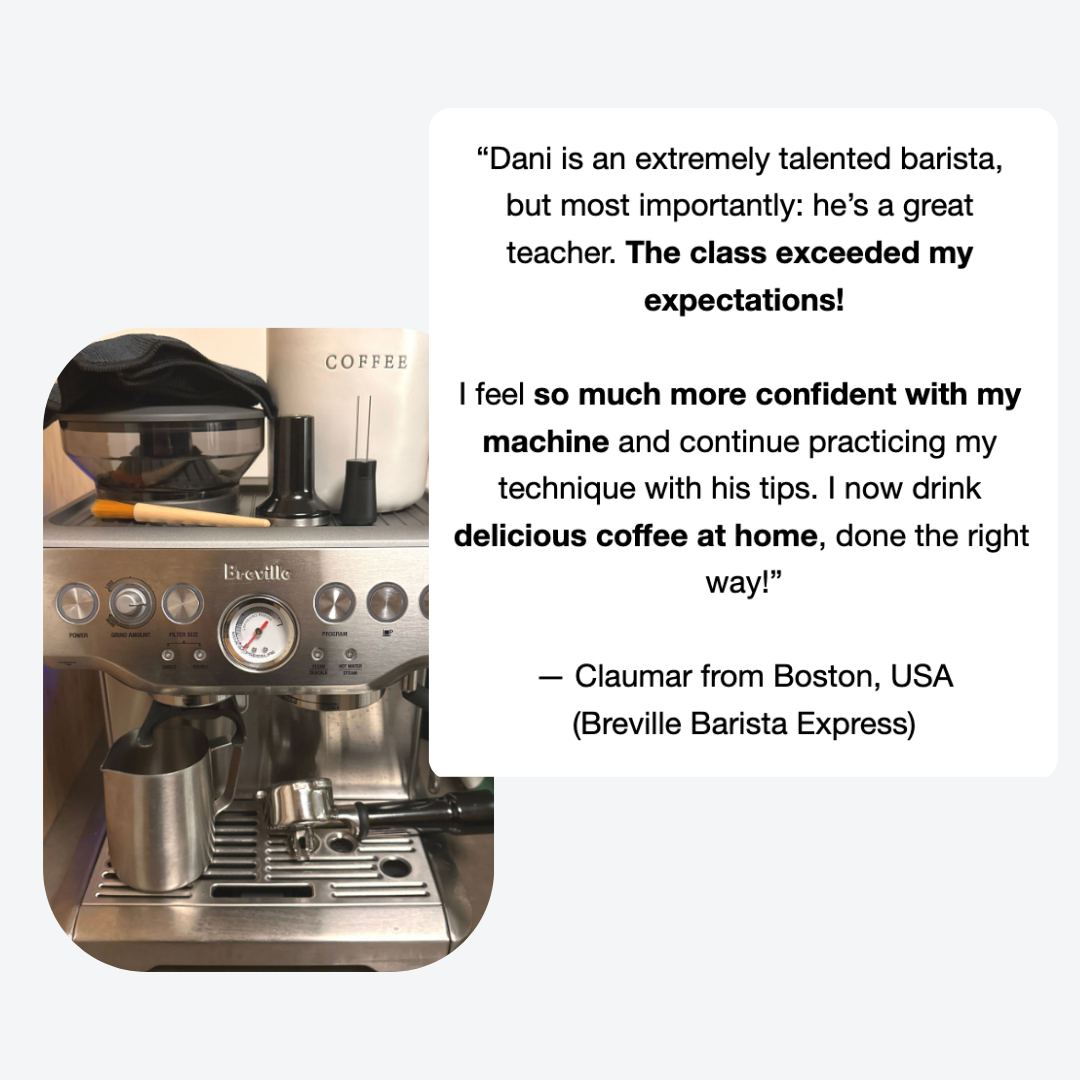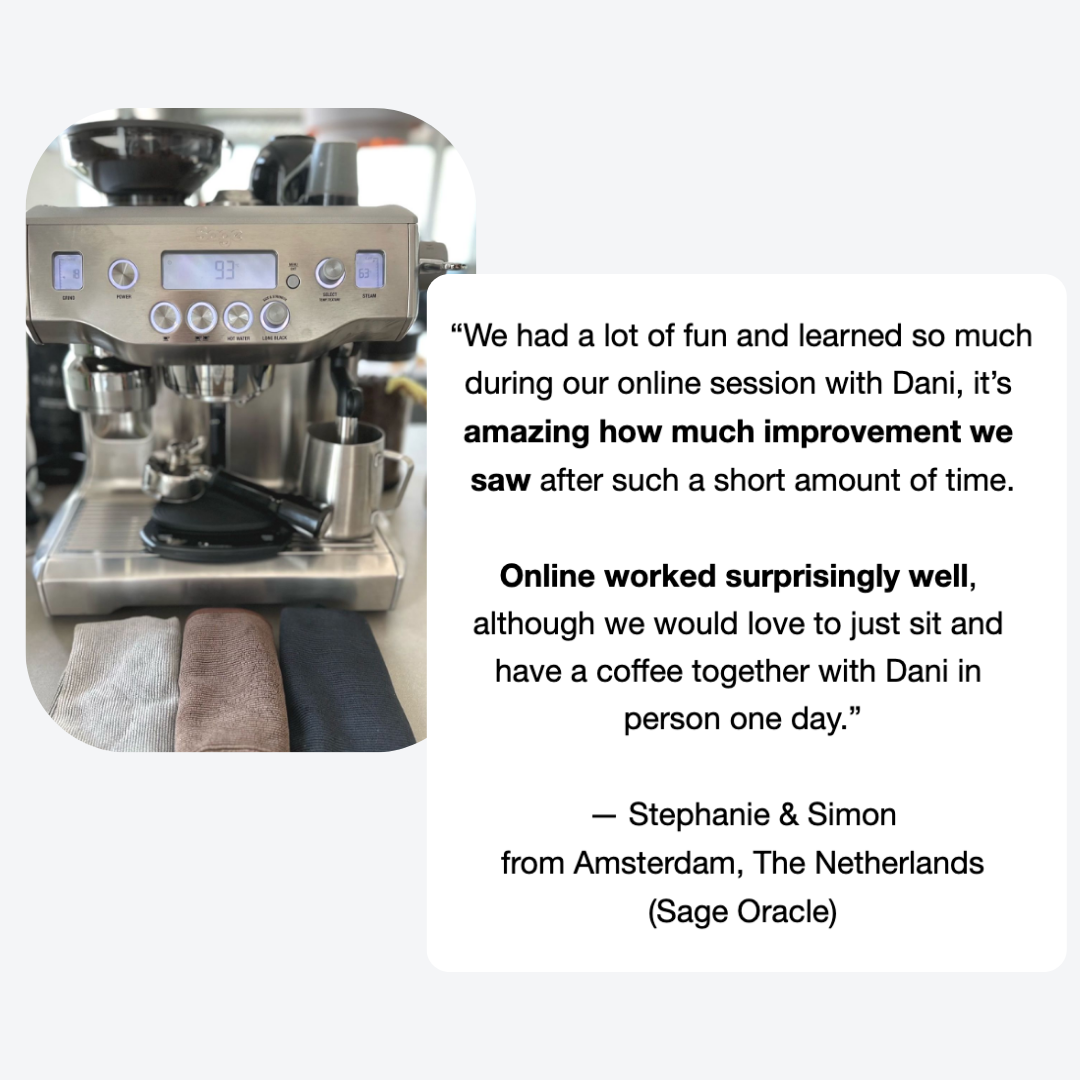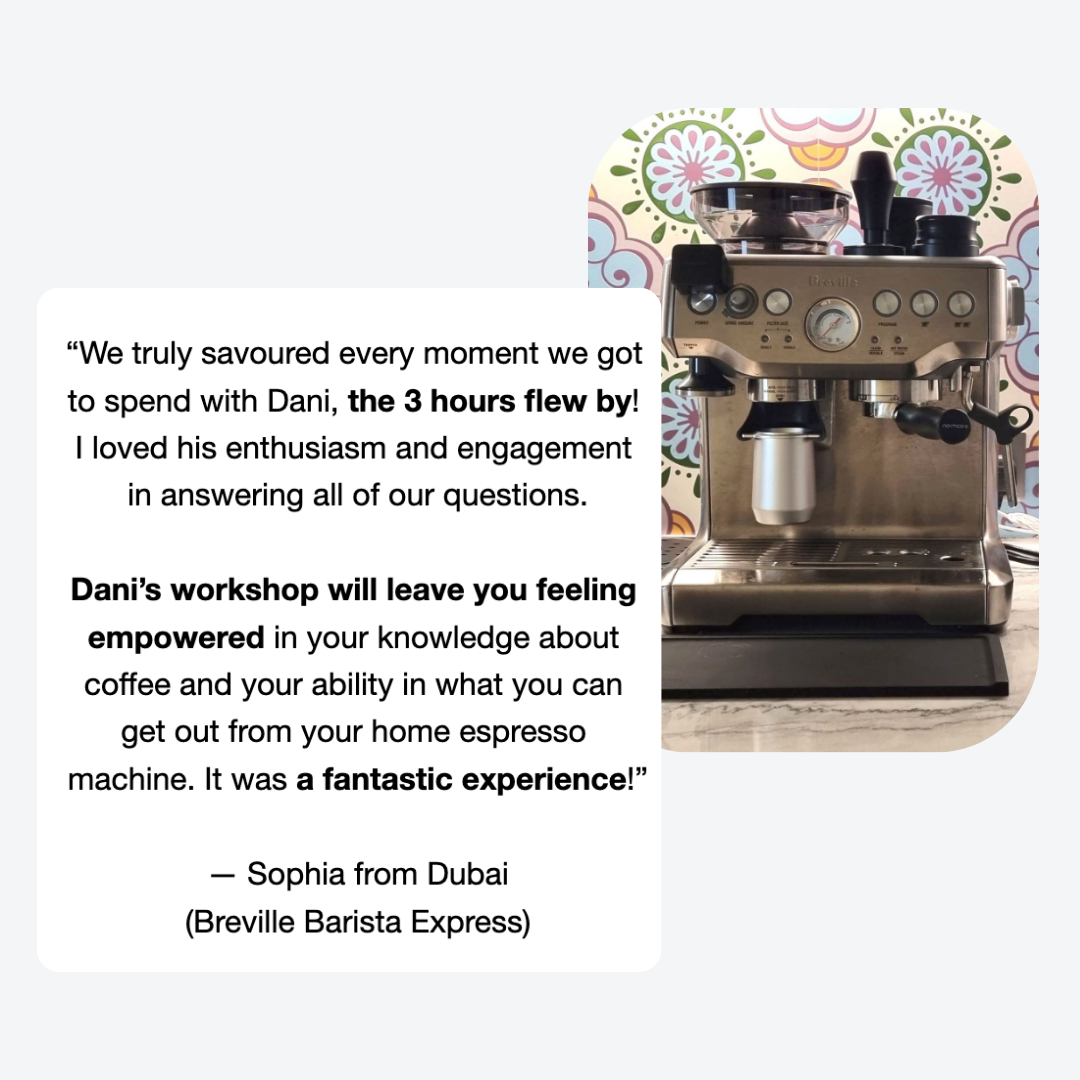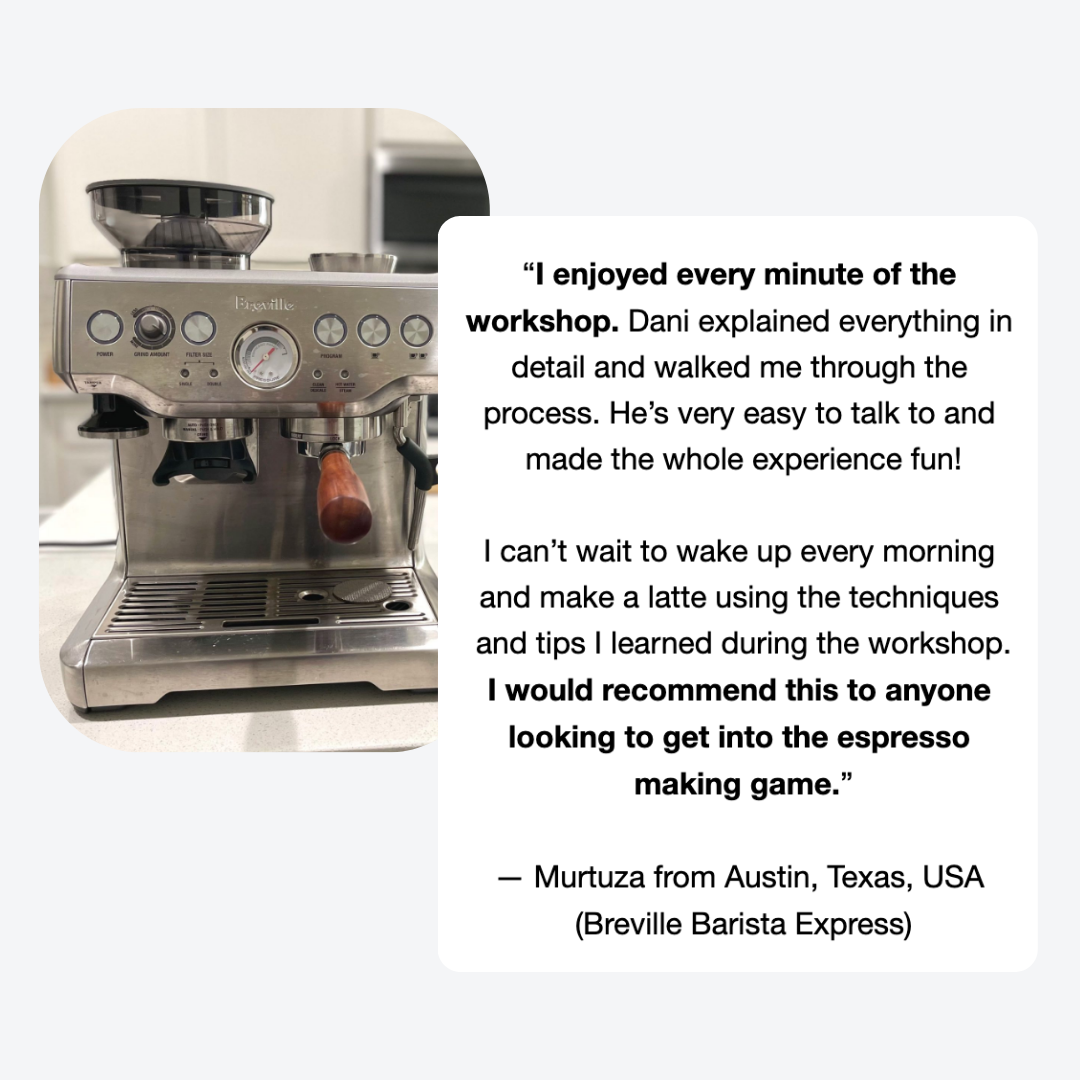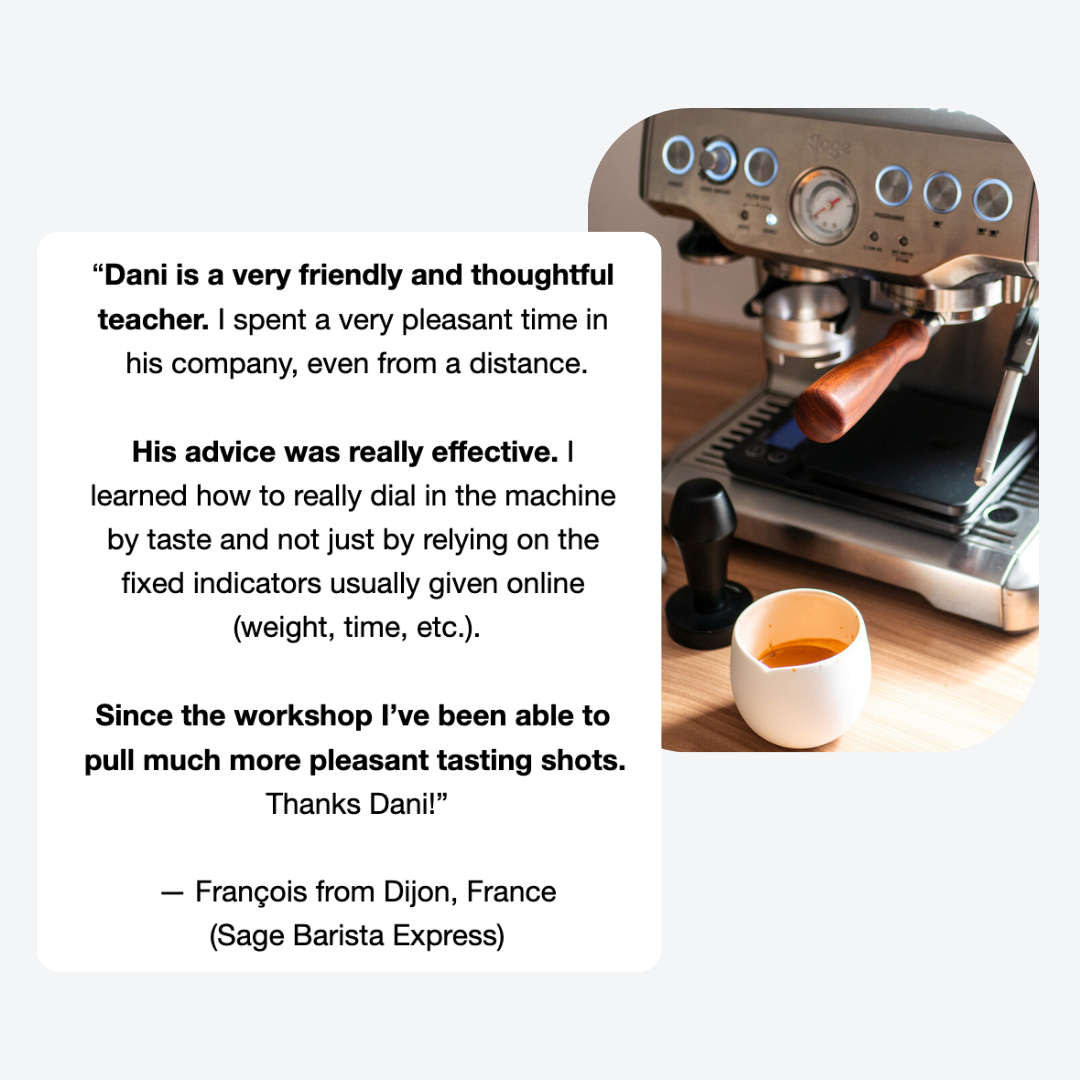How to reduce waste when making espresso at home
Simple and practical tips for home baristas
Making espresso at home requires spending a certain budget on freshly roasted coffee beans, milk for lattes and cappuccinos (be it full fat/whole milk or plant based), as well as investing in a few accessories to help you get the best out of your coffee and home espresso machine.
With that in mind, we would like to provide you with a few simple and practical tips on how you can be a more sustainable home barista and reduce waste when making espresso. Some will require a bit of planning in advance, whereas some are easy tweaks to your current coffee making routine.
Consider single dosing
Instead of filling up your grinder’s hopper all the way up, we encourage you to look into single dosing.
It maintains the freshness of your coffee beans for longer (because you’re only grinding what’s necessary), instead of getting stuck in the hopper for days, turning stale and ultimately having to be discarded in the garbage bin.
Single dosing also reduces waste by not having to purge the grinder everytime you make a grind size adjustment (this makes sure there’s no old coffee sitting in the chute and allows new coffee to pass through the burrs of the grinder).
Use a coffee scale
One of the things we always recommend to home baristas during our workshops is to use a scale when making espresso at home. This is to weigh the dose (the amount of ground coffee used), as well as the yield (liquid espresso extracted in the cup). Doing so will help you maintain a go-to recipe, achieve consistent results, as well as reduce waste by not having to do unnecessary grind size changes or throw away coffee which hasn’t come out properly.
Get a coffee scale that is rechargeable
This is an opportunity to be mindful about the environment and skip single-use batteries as much as possible. Nowadays, you can find so many brands on the market, some more affordable than others, and all have a USB-C or mini-USB port for convenient recharging. Once you complete a full charge, many of these scales can last you for weeks. Say goodbye to single-use batteries which end up in landfills.
Use a vacuum-sealed coffee beans container
The number one enemy of coffee beans freshness is oxygen. Vacuum-sealed containers pump the oxygen out to create a vacuum within the container. The vacuum produces a pressurized seal that prevents oxygen from coming in. This is why a vacuum-sealed container is a great way to store your coffee beans and maintain their freshness for longer, and helps you avoid waste by not having to throw away any coffee beans which may have gotten stale because of improper storage conditions (heat, moisture, unwanted odors, exposure to oxygen etc.).
If you’re curious, you can see the one I’ve been using here. It’s from Barista Essentials, our partner for home barista accessories in Europe. Happy to share that the code DANI10 will grant you 10% off on your first order!
Get fresh coffee beans in small quantities
Once roasted coffee has a limited shelf life, usually 3 months or less from the roast date. Getting your coffee beans fresh and in small quantities can help you to not only avoid a situation where you end up having them go stale, but also one where you buy too much of a coffee that you may not like as much as you expected.
Pre-weigh the milk before steaming
Maybe you think this is a little overboard, but if you collect all the milk which ends up unused after steaming, it can easily amount to a significant quantity. And, let’s be honest about it, that’s money down the drain. Especially when using plant based milks, these are considerably more expensive.
If you use the same coffee cup or mug daily, find out what is the ideal quantity of milk for you to properly steam it and store the excess for later. Not only you’ll be saving money, but you reduce waste and get more coffees out of your milk carton. We personally use oat milk and anything we have left behind after steaming, we store that in the fridge and use it later on in smoothies or overnight oats.
Practice your latte art by making hot chocolates
If you’re keen to practice and improve your latte art without having to waste coffee beans for espresso, we always suggest creative ways, such as using cocoa powder to make a base which resembles espresso. Simply add cocoa powder and a bit of hot water to your preferred cup, mix really well until you get an espresso-like consistency, steam the milk and you’re ready for pouring your latte art pattern. This way you get to practice latte art at home more frequently and you don’t waste any coffee beans.
Make sure to clean your equipment
Last, but not least, cleaning your home barista equipment properly ensures that:
your coffee will taste as intended (no unwanted residues lingering onto the equipment and getting transferred into your cup during the espresso extraction or milk steaming) and
your equipment will last for longer
We hope you find these tips helpful and, if you’d like to dive deeper, you may consider our espresso and latte art home barista workshops. Happy brewing!



